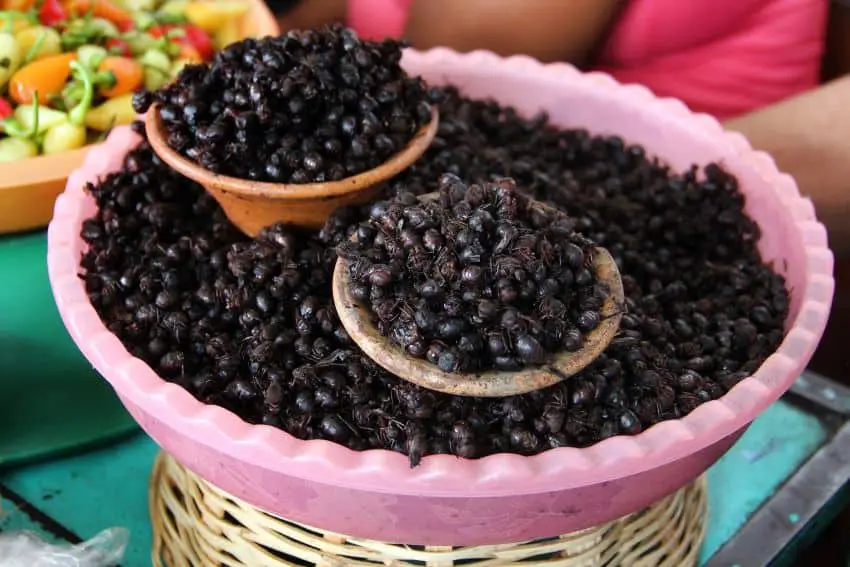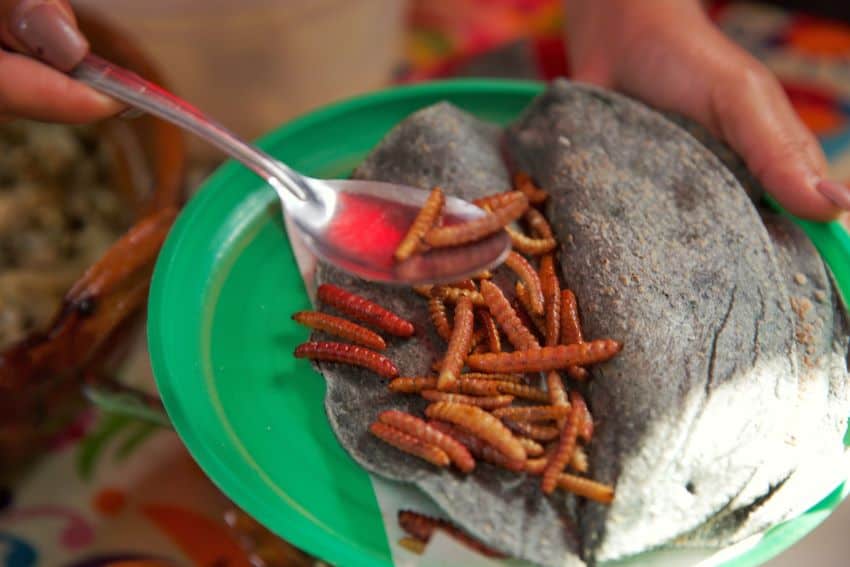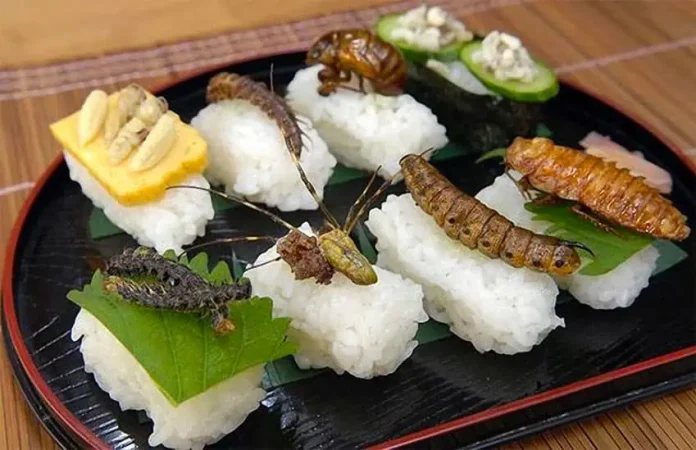Mexican gastronomy is a worldwide favorite, beloved enough that it’s been recognized by UNESCO as an Intangible Cultural Heritage of Humanity. Outside of Mexico, it is easy to find guacamole, al pastor-style meat, chilaquiles and tacos of all kinds, as well as other lesser-known foods like pozole or mole. But none of these are unusual kinds of Mexican food.
In Mexico, there are some ingredients considered strange and exotic, even by locals. Some of these were eaten in pre-Hispanic times, while some have been created more recently. Nevertheless, they all are a part of the longstanding artform that is Mexican cuisine. Don’t be afraid to try these!
Chapulines

Grasshoppers are the most widely known of what could be considered “exotic” Mexican cuisine. There are many different types of edible chapulines found all around the country, but they’re traditionally associated with the state of Oaxaca. One of the most popular ways to eat them is on a traditional Oaxacan tlayuda. Although small, chapulines are high in vitamins and minerals. They’re acidic and crunchy, and delicious on their own.
Iguanas
If you’ve gone to a Mexican beach, there’s a high chance that you have seen an iguana trotting around. They are especially common in the southeast, the region that took to also eating them. Some people say it tastes like chicken.
Maguey Worms
If you’re a mezcal enthusiast, you’ve probably seen one of these little guys lying at the bottom of a bottle. Maybe you’ve even eaten it with your last shot! But you might not know that maguey worms are eaten outside of mezcal, too.
There are actually two types of maguey worms. The red ones are moth larvae that infest magueys and eat them, while the white ones are butterfly caterpillars that grow onthe leaves and roots of magueys. They are expensive because you can only get three or four out of a maguey, which dies after the harvest. They are most commonly consumed in Hidalgo, but also eaten in other states like Tlaxcala. Eat them fried, with butter or olive oil, in a taco.
Escamoles

Some people call it the Mexican caviar: ant eggs. Delicious and strange at the same time, escamoles have been eaten here all the way back to pre-Columbian times, which is why they can be easily found in areas closer to historic ruins, like Teotihuacán. The dish’s name actually comes from the Nahuatl words for “ant” and “stew.”
You can find escamoles in soups and tacos, or cooked with butter, onion and garlic. They’re packed with protein and are quite nutritious.
Huitlacoche
Once upon a time, France discovered moldy cheese was actually delicious. Mexicans realized the same thing about corn. Huitlacoche, known as corn smut to English speakers, is a very dark, greenish-blue fungus that grows on ears of corn infected with a pathogenic fungus. It is considered a “manjar” — a delicacy — and is most commonly eaten inside quesadillas or tacos.
Scorpions

Scorpions are found in many places in Mexico, especially areas that are hotter or more humid. This is especially true for Durango, a northern state that has become known for serving these somewhat terrifying arachnids. Although they’re not necessarily a traditional dish, Durango is the place to go for them. Scorpions can be served fried, inside a taco, or on a stick.
Chicatana ants
Chicatana Ants are another Oaxacan delicacy. These huge ants — they grow to between 1.8 and 3 centimeters — are toasted in hot pans and develop a crunchy consistency. Although they can be eaten straight after toasting, one of the most common ways to eat them is to grind them into a salsa. Like many of the other items on this list, they are high in vitamins and minerals. You can find them mainly in Oaxaca, but natives of Veracruz and Tabasco enjoy chicatanas as well.
Jumiles
These are a typical dish of the Pueblo Mágico of Taxco, in Guerrero. They are flying insects that are eaten either inside a sauce or with lime and salt, and — you guessed it — in tacos. Some say they taste like cinnamon, which could be because Jumiles eat the branches and sticks of oak trees. Either way, it’s a strong taste that you either love or you hate.
Collecting jumiles is quite difficult, as they live quite high in the canopy and are fast fliers. Apart from a delicacy, they are also considered sacred by some people in Taxco, as they are considered to be dead loved ones that fly in to visit.
Cuetlas

Another pre-Columbian meal, cuetlas — also known as chiancuetla and tepolchichic — are butterfly larvae. These larvae grow on a select few types of trees during the rainy season. They are eaten mainly in Puebla, but you’ll also find them in Guerrero and Veracruz. Their taste is delicious and similar to that of chapulines. Plus, they are rich in protein, iron and vitamin B.
The best way to enjoy cuetla is grilled and inside tacos with guacamole.
Of course, the list does not end here. With some names more eye-catching than others, things like eye tacos, rattlesnakes, pejelagarto fish, rat soup, lake shrimp and brains can also be found in different parts of the country. If you’re feeling adventurous, take a little trip around, do some research and try one — or all!
Montserrat Castro Gómez is a freelance writer and translator from Querétaro, México.
